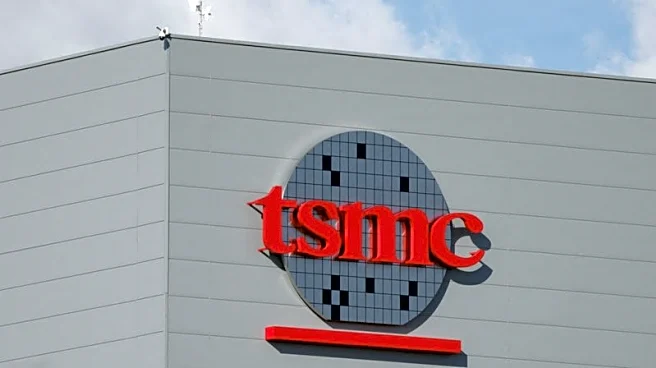What's Happening?
Taiwan Semiconductor Manufacturing Company (TSMC) has reported a nearly 40% increase in net profit for the last quarter, driven by the growing use of artificial intelligence. The company, recognized as the world's
largest semiconductor manufacturer, achieved a record net profit of 452.3 billion new Taiwan dollars (US$15 billion) in the July-September period. TSMC's revenue also saw a 30% year-on-year increase. The company is expanding its chip fabrication capabilities in the United States and Japan to mitigate risks from China-US trade tensions, with significant investments planned for new facilities in Arizona.
Why It's Important?
TSMC's financial success highlights the critical role of AI in driving demand for advanced semiconductor technologies. As AI applications continue to expand, companies like TSMC are well-positioned to benefit from increased chip demand. The firm's strategic investments in US facilities reflect a broader trend of diversifying production locations to reduce geopolitical risks. This expansion could strengthen the US semiconductor industry, potentially leading to job creation and technological advancements. However, Taiwan's rejection of a proposal to split chip production with the US indicates ongoing complexities in international trade relations.
What's Next?
TSMC expects continued strong demand for its advanced process technologies in the upcoming quarter, with projected revenue between $32.2 billion and $33.4 billion. As the company continues to invest in US facilities, stakeholders will be monitoring potential impacts on the global semiconductor supply chain and trade dynamics. The resilience of AI demand will likely play a crucial role in shaping TSMC's future strategies and market positioning.
Beyond the Headlines
The expansion of TSMC's operations in the US could have broader implications for the semiconductor industry, including shifts in global supply chains and increased competition among chip manufacturers. The company's commitment to sustainability and innovation may also influence industry standards and practices, particularly in areas like energy efficiency and environmental impact.












